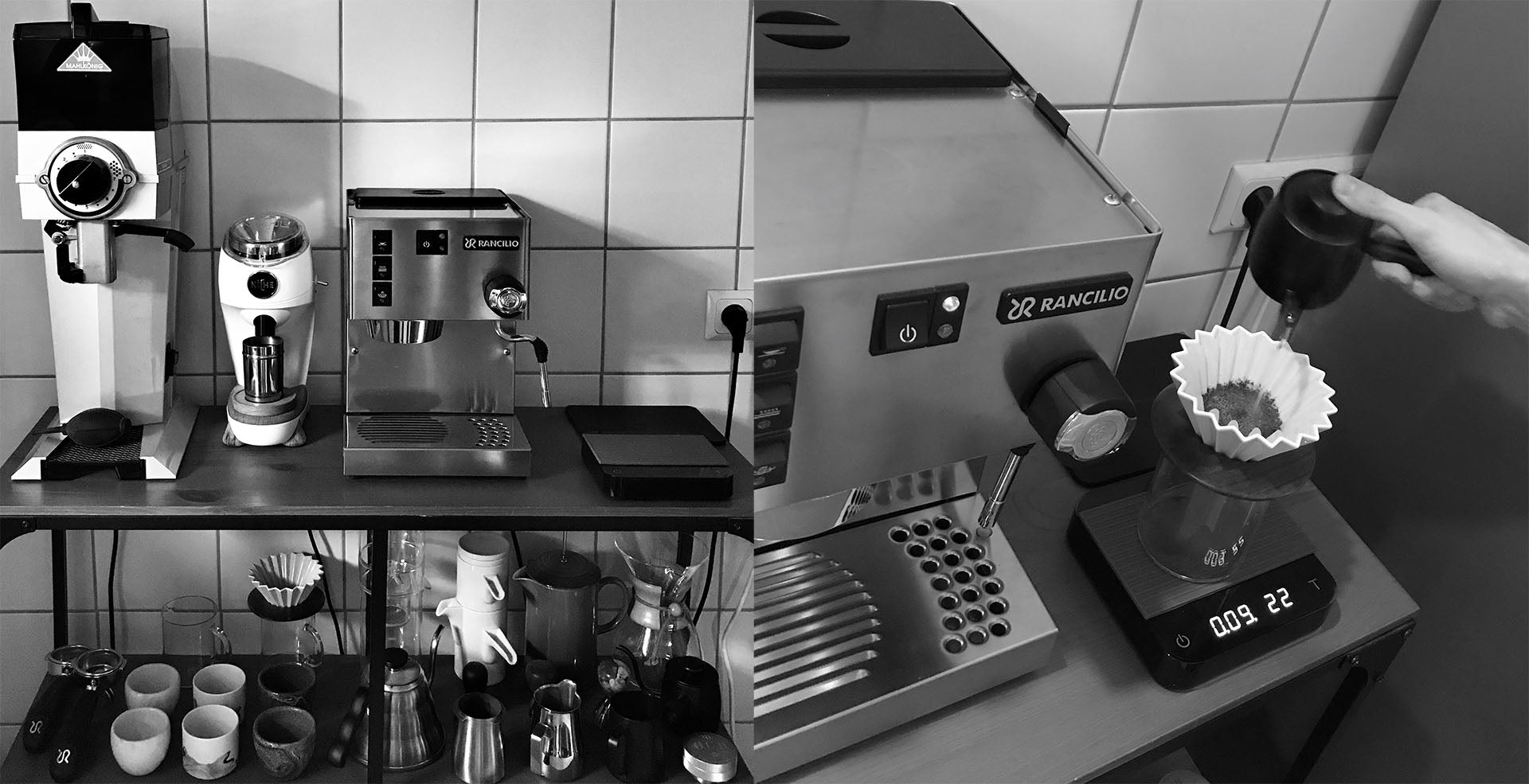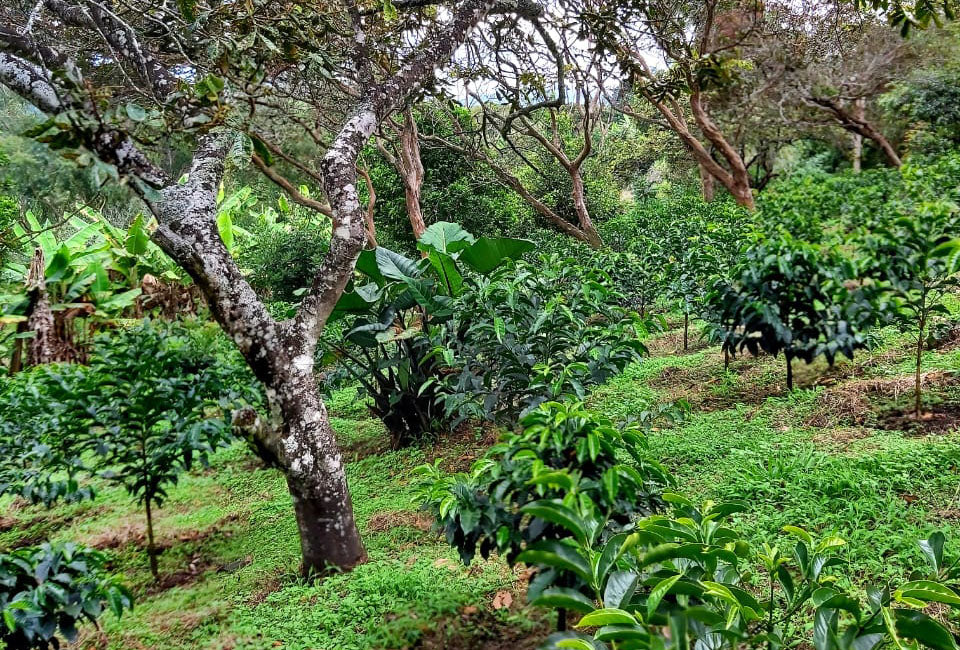Jan is an avid coffee brewer of high profile coffees and in search of extraordinary coffee experiences. He was tremendously excited about Jamison’s Finca Deborah offerings this season and acquired all of them. Jan is located in Cologne, Germany.
Additionally, Jan is a linguist working on the analysis and documentation of languages from Northeastern Africa. At the moment, his focus is on languages from the Nuba mountains in Sudan, but due to genealogical connections he have also worked on languages from classical “coffee countries", e.g. Ethiopia and Kenya. Even if Jan's work is slightly connected to culture and society, there are still some aspects of coffee culture appearing in his work from time to time.
“Needless to say and regardless scientific field, from scientist to scientist, we love working with scientists.” - Ivica
Unfortunately, the water in Cologne is non-optimal for any kind of coffee, which is why Jan uses for bottled water. The main preferred brand of bottled water is Volvic, however it is high in TDS. We started working together to find a more optimal water given a template consisting of mineral composition, pH and TDS which provided a starting point:
Calcium: 0.9 mg/l
Na: 1.7 mg/l
SiO2 1.4 mg/l
K 0.3 mg/l
Magnesium 0.2 mg/l
Sulfate <7.0 mg/l
Chlorid 2.5 mg/l
Nitrate 0.1 mg/l
Flouride < 0.1 mg/l
pH 6.2
10 < TDS < 25
For these prestigious coffees, we recommend everyone using low mineral water is surprised with the cup quality for ”our” coffees on a personal level. Water, yes. Can you imagine, water being one thing human takes for granted, can have such great impact. Not just in coffee but in general.
Jan did a vast research and he finally found two waters which are available in Germany in (glass) bottles. Both are from the north of Italy and are supposed to be be as “natural” as possible. The values are as follows:
Water 1: Lauretana [1]
Calcium: 1,3 mg/l
Na: 1,2 mg/l
SiO2: 5,1 mg/l
K: 0,2 mg/l
Magnesium: 0,3 mg/l
Sulfate: 1,5 mg/l
Chloride: 0,25 mg/l
Nitrate: 1,9 mg/l
Fluoride: < 0,1 mg/l
pH: 6,3
TDS: 7,5
Water 2: Acquaplose [2]
Calcium: 2,7 mg/l
Na: 1,2 mg/l
SiO2: 6,5 mg/l
K: 0,2 mg/l
Magnesium: 1,5 mg/l
Sulfate: 3,1 mg/l
Chloride: 0,3 mg/l
Nitrate: 1,0 mg/l
Fluoride: <0,1 mg/l
pH: 6,6
TDS: 13
At first glance, we believed both would work well. The level of Magnesium is slightly on the lower end of the first water, also the pH and TDS which could be in our benefit. We therefore started calibrating with one of our Ethiopian coffees. This led us to the following statement and also understand our focus:
"The ideology in our roasting is to highlight flowers, fruits and berries while preserving important sweetness and integrating playful acidity. We have always favored acidity since it brings life to everything that surrounds us and binds us."
We were also speaking about resting time. These coffees are roasted as they would for a championship, meaning they don’t sit and wait long. We therefore ensure to ship with premium suppliers and overnight when available at the destination. They are optimized for 3-7 days, hence ensuring they can reach you fast. Also, the supplied calibration coffee, Jan could use the Ethiopia to “feel if he is comfortable with the level of freshness”.

Later, we started looking at brewing methods. Jan had studied our WBrC 1:1:1 procedure for 300ml and was curious to know if the method also applies for less amount of water.
“Could I go for example for three 80g pours to reach a total of 240g? And by the way, which grind setting do you recommend?”
About the method, V60 is preferred. However, that should not stop anyone for choosing a method, tools and helpers.
Regarding the amount of coffee, the recipe is also developed for these purposes. It allows you to successfully scale up and scale down the concentration of coffee and water. This is very important when dealing with prestigious coffees and also to save precious (and expensive) coffee.
For example, the ratio is set to 1:15: 1g of coffee for each 15g of water. Therefore, one can for example use 15g in (coffee), 225g out (brewed coffee), with slightly reduced water flow when pouring and retain 1 minute between each pour. Each pour would then be (225 / 3) = 75g. However, the scalability can also directly be transfered to the timing as well as long as you retain temporal consistency.
Keep in mind that one might be obliged to make a tiny adjustment for the grind size to ensure the water does not pass through the filter too fast.
With a 100g starting point, we have personally completed up to 13+ brews of any Deborah using only 7.5g of coffee (100g / 7.5g) = 13+ brews. This is very important when analyzing high level coffees in order to save precious raw material.
Up until this point, we did theorize a plentiful in relation to the water while Jan was waiting for his 2-3 day coffee delivery. Upon receiving his package, he immediately began to calibrate everything (with the Ethiopian coffee, which was very helpful) and was now all set to try the first coffee from Finca Deborah.
We were very privileged to roast our most prestigious coffees for Jan - all of the Panama and Uganda. Jan explains:
“Experimenting went well with pretty much all of the coffees. Firstly, I reduced the amount of coffee to 10g and brewed it with 150g of water in three 50g pours. By adjusting the grind size individually I was able to hit the 3:00 mark quite consistently (the threshold being +/- 10 seconds) with the coffees from Panama. The Ugandan coffee proved to be a bit harder to adjust with a prolonged third pour ending between 3:30 and 4:00. However, I was still satisfied with the result (especially compared to the Ethiopian coffee, which I used for the first calibration and which wasn’t satisfying at all with a similarly prolonged brew time), but will keep working on the right balance.”
After a short while, meaning less than a day, Jan returned with the following observations:
“Now that I‘ve tried all of the coffees, I have to say that I‘m really impressed. All of them are really special and exactly what I was hoping for when I decided to order coffee from you. My favorites up to this point are Illumination and Limitless, with Limitless being absolutely stunning. This is definitely one of the three best coffees I‘ve tasted over the years and unlike anything I‘ve tried before. The delicate and creamy kind of sweetness with its distinct vanilla and coconut notes is very fascinating and nothing one would assume could be achieved in this way. Impressing work!
I‘ve also tried different waters and found the first one (Lauretana) being a better fit for all of the coffees.
By the way, I read the story behind your Ugandan coffee, which in was firstly a bit overshadowed by the Finca Deborah coffees, but over the last brews has developed into a favorite of mine. In fact it is the first Ugandan coffee I‘ve tried, even if I have had connections to Uganda at work before.
Thank you again for supplying me with these amazing coffees and for the helpful advice!”
These words are very encouraging for us to read. Additionally, we always strive to help on a personal level. Each coffee leaves a dedicated mark. The reason for adding an Ethiopia as a calibration coffee, one can see in which direction the coffee is heading and set more appropriate grind settings, water, etc. - to steer you in the "right" direction.
We are also happy to know that Jan reduced the amount of coffee to 10g for each brew. That is actually a "proper" amount for a cup and it will additionally make you use less coffee, target the "appropriate settings" and ultimately be able to enjoy the coffee brewing and moments for a little while longer. We were also very happy to share Jan’s experience with Jamison and Leslie of Finca Deborah.
Jan concludes:
“I can imagine that your experience in all parts of the supply chain and the exchange of insights was really valuable for the work you‘re doing. Beyond that, I think the approach of being as transparent as possible with the customer is very important as well. By providing me with all the information beforehand you gave me a good framework for approaching your coffees, which, in my experience, is not as common as it could (or should?) be in the industry.
So thanks again for the tips! Especially your recommended water profile proved to be really helpful. I even transferred it to other coffees with astonishing results. Compared to Volvic (which is kind of a benchmark bottled water for home-brewing in Germany), I was able to further reduce the earthy chocolaty notes in many brews while highlighting sweeter and fruitier (even acidic) flavors, which I primarily aim for in my brews.
By the way, as I usually drink only one or two cups of coffee per day, I started to vacuum seal my coffees and freeze them at -22 degrees Celsius in order to preserve the freshness of the beans. It has proved to work really well and by doing so I was able to stretch the period in which I could enjoy your coffees for some time.
Thanks for all your work and the passion you‘re putting into the transfer of coffee knowledge.”
In retrospect.
We will return to this recipe at later occasions covering its development and execution. At the World Brewers Cup, it placed 6th of 41 in the Open Service.
[1] http://www.lauretana.de/index/de/eigenschaften/quellanalyse/
[2] http://www.acquaplose.com/en/properties/characteristics/



